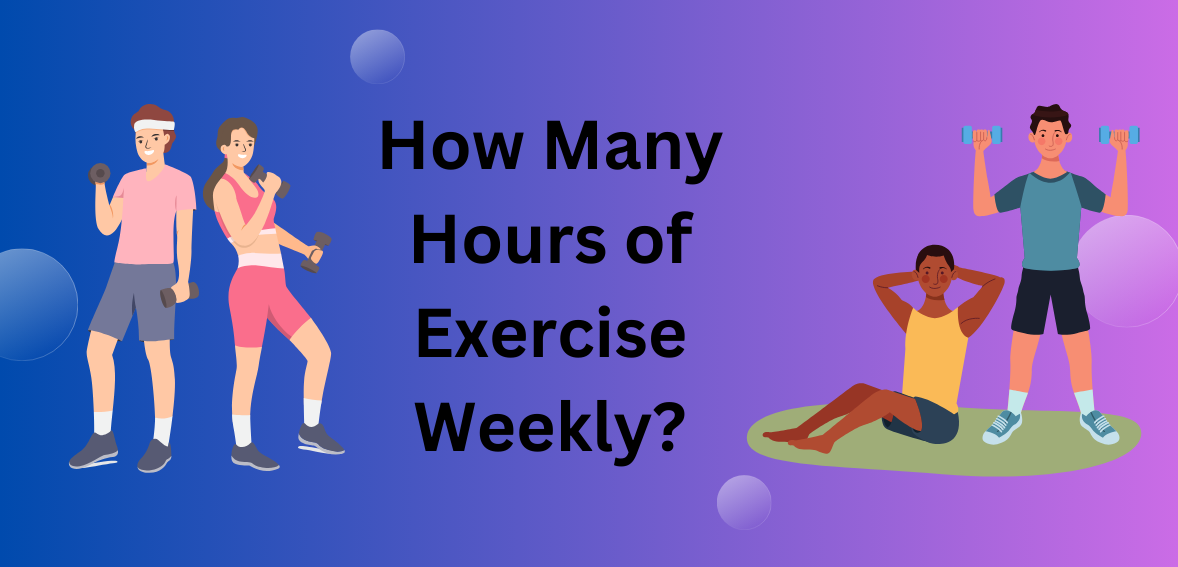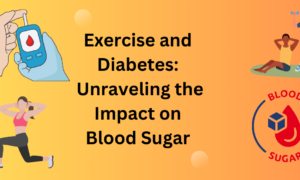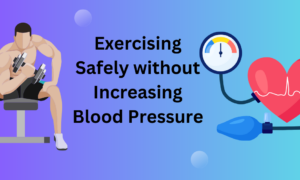Are you ready to take charge of your health and fitness? Regular exercise is not just about looking good; it’s about feeling great and living a longer, happier life. But with so many conflicting opinions out there, how do you know how much exercise per week is enough? Don’t worry – we’ve got you covered! In this blog post, we’ll break down the recommended amount of exercise, explore different types of exercises and their benefits, help you create a personalized workout plan, provide tips for staying motivated and consistent, offer solutions to possible roadblocks along the way, and ultimately guide you towards finding the perfect balance for your unique lifestyle. So grab your sneakers and let’s dive in!
The importance of regular exercise
Regular exercise is not just an optional activity; it is a crucial part of maintaining overall health and well-being. Engaging in physical activity on a regular basis has numerous benefits for both the body and the mind.
First and foremost, exercise is essential for maintaining a healthy weight. By burning calories and increasing your metabolism, regular physical activity helps to prevent excessive weight gain while also promoting weight loss if necessary.
Exercise also plays a key role in preventing chronic diseases such as heart disease, diabetes, and certain types of cancers. It improves cardiovascular health by strengthening the heart muscle, lowering blood pressure, and reducing bad cholesterol levels.
Beyond its physical benefits, exercise has tremendous positive effects on mental health. Regular workouts release endorphins that boost mood and reduce stress levels. Exercise can even alleviate symptoms of anxiety and depression by promoting feelings of relaxation and improved self-esteem.
Moreover, incorporating exercise into your routine enhances brain function. Physical activity increases blood flow to the brain, which leads to better cognitive function, improved memory retention, increased focus, and heightened creativity.
In addition to these direct benefits on our bodies and minds, exercise can also improve sleep quality. People who engage in regular physical activities tend to fall asleep faster, experience deeper sleep cycles,
and wake up feeling more refreshed. Furthermore, exercise strengthens muscles and improves flexibility,
which reduces the risk of injury and allows us to perform daily tasks with ease. Lastly, regular exercise promotes longevity by slowing down the aging process and improving overall quality of life as we age.
With all these incredible advantages at stake, it’s clear that making time for regular exercise should be prioritized. So let’s explore how much you need each week!
The recommended amount of exercise per week
The recommended amount of exercise per week is a topic that often sparks debate and confusion. While the answer may vary depending on factors such as age, fitness level, and overall health, there are general guidelines to follow.
According to the American Heart Association (AHA), adults should aim for at least 150 minutes of moderate-intensity aerobic activity or 75 minutes of vigorous-intensity aerobic activity every week. This can be broken down into 30 minutes per day, five days a week.
In addition to aerobic exercise, it is important to incorporate strength training exercises into your routine at least two days per week. These exercises help build muscle mass and improve bone density.
If you’re just starting out or have been inactive for a while, it’s best to start slowly and gradually increase your exercise duration and intensity. Remember that any amount of physical activity is better than none!
Finding activities you enjoy can also make sticking to an exercise routine easier. Whether it’s going for a run, taking a dance class, or playing a sport with friends, choose activities that bring you joy.
Remember that these recommendations are just guidelines – listen to your body and adjust accordingly. Consulting with a healthcare professional or certified fitness trainer can also provide personalized advice tailored to your specific needs.
Stay motivated by setting realistic goals and tracking your progress. Celebrate small victories along the way! And don’t forget about rest days – giving your body time to recover is essential for preventing injury and maintaining long-term consistency in your workout routine.
By finding the right balance between challenging yourself and practicing self-care, you’ll be well on your way toward achieving optimal health through regular exercise!
Different types of exercises and their benefits
When it comes to exercise, there is no one-size-fits-all approach. Different types of exercises offer unique benefits to our bodies and minds. Whether you prefer high-intensity workouts or more gentle forms of movement, finding the right mix for your needs is crucial.
Cardiovascular exercises such as running, swimming, or cycling are great for improving heart health and boosting stamina. They increase blood flow throughout the body, helping to strengthen the cardiovascular system and burn calories.
Strength training exercises like weightlifting or bodyweight exercises help build muscle mass and improve overall strength. Strong muscles not only make daily activities easier but also support healthy joints and bones.
Flexibility-focused exercises like yoga or Pilates enhance joint mobility and promote better posture. These practices can help reduce muscle tension, improve range of motion, and prevent injuries.
Incorporating balance exercises into your routine can improve stability and coordination. Activities like tai chi or balance board training challenge your core muscles while enhancing proprioception – your body’s awareness in space.
Don’t forget about the importance of restorative exercise! Stretching routines or foam rolling sessions can aid in recovery by reducing muscle soreness and increasing flexibility.
Remember that a well-rounded workout plan should include a combination of these different types of exercises to achieve optimal physical fitness. So why settle for just one when you can reap the benefits from a variety? Experiment with different activities until you find what works best for you!
Stay tuned for our next blog post where we’ll discuss how to create a personalized workout plan tailored specifically to your goals!
Creating a personalized workout plan
When it comes to exercise, one size does not fit all. We all have different goals, preferences, and schedules that need to be taken into account when designing a workout plan. The key is to create a personalized approach that suits your individual needs and helps you stay motivated.
Identify your fitness goals. Are you looking to lose weight, build muscle, improve endurance, or simply maintain overall health? By clarifying what you want to achieve, you can tailor your workouts accordingly.
Next, consider your interests and preferences. If the thought of running on a treadmill bores you to tears, opt for activities that are more enjoyable such as dancing or swimming. This will make it easier for you to stick with your routine in the long run.
It’s also important to take into account your current fitness level. If you’re just starting out or returning after a break from exercise, start slowly and gradually increase intensity over time. Pushing yourself too hard right off the bat can lead to burnout or injury.
Incorporating variety in your workouts is crucial for preventing boredom and challenging different muscle groups. Try including cardiovascular exercises like jogging or cycling along with strength training exercises like weightlifting or bodyweight exercises.
Additionally, be mindful of scheduling regular rest days into your plan. Rest is an essential part of any workout routine as it allows muscles time to recover and rebuild.
Last but most importantly – listen to your body! Pay attention if something doesn’t feel right during exercise and adjust accordingly. It’s always better to err on the side of caution than risk injury by pushing through discomfort.
By creating a personalized workout plan based on individual needs and preferences while taking into consideration fitness goals and current abilities – success becomes much more attainable! So go ahead – design a plan that works best for YOU!
Tips for staying motivated and consistent
Staying motivated and consistent with your exercise routine can be a challenge, but it’s crucial for long-term success. Here are some tips to help you stay on track:
1. Set realistic goals: Start by setting achievable goals that align with your fitness level and schedule. This will give you something to work towards and keep you motivated.
2. Find activities you enjoy: If you dread the thought of going to the gym, try different forms of exercise until you find something that brings you joy. Whether it’s dancing, hiking, or playing a sport, incorporating activities you love into your routine will make it more enjoyable.
3. Mix it up: Doing the same workout day after day can quickly lead to boredom and burnout. Keep things interesting by trying new exercises or switching up your routine regularly.
4. Schedule workouts in advance: Treat your workouts like any other important appointment by scheduling them in advance. This helps create accountability and ensures that exercise becomes a non-negotiable part of your week.
5. Track your progress: Seeing improvements over time is incredibly motivating! Keep a record of your workouts, whether through an app or journal, so you can look back at how far you’ve come.
6. Stay positive: It’s normal to have off days or even skip a workout occasionally – don’t beat yourself up about it! Instead, focus on the progress you’ve made and get back on track as soon as possible.
Remember, staying consistent with exercise is all about finding what works best for YOU! Experiment with different strategies until you discover what keeps you motivated and committed to leading an active lifestyle.
Possible roadblocks and how to overcome them
1. Lack of Time: One common roadblock that many people face when it comes to exercise is a busy schedule. Between work, family responsibilities, and other commitments, finding time for workouts can seem impossible. However, with some planning and prioritization, you can overcome this obstacle. Consider waking up earlier or using your lunch break for quick workouts. Even 10-15 minutes of exercise is better than none at all.
2. Lack of Motivation: Another challenge is staying motivated consistently throughout the week. It’s easy to start strong but lose steam as days go by. To overcome this hurdle, find ways to keep yourself motivated and accountable. Set realistic goals, track your progress, reward yourself for milestones achieved, or find an exercise buddy who can provide support and encouragement.
3. Plateaus: Sometimes you may hit a plateau where you don’t see any further improvement in your fitness levels or weight loss journey despite regular exercise efforts. This can be discouraging but remember that plateaus are normal in any fitness journey. To overcome them, try changing up your routine with new exercises or increasing the intensity of your workouts gradually.
4. Having physical limitations/health conditions: If you have specific health concerns or physical limitations that make certain exercises difficult or unsafe for you to perform, prioritize safety over pushing through discomfort.
Even so, you should consult a healthcare professional before starting any new workout regimen.
They will be able to guide you on which exercises are safe for you given your specific circumstances,and may also suggest modifications or alternatives.
5. Lack of knowledge/experience: Some individuals may feel overwhelmed by a lack of knowledge about different types of exercises, safe techniques, and proper form.
To overcome this, it’s advisable to seek guidance from professionals like personal trainers, and fitness instructors. or even online tutorials.
There are plenty of resources available that offer step-by-step instructions, videos, demonstrations, etc. to help beginners get started.
Remember, everyone faces roadblocks on their fitness journey. The key
Conclusion: finding the right balance for your lifestyle
In today’s fast-paced world, finding time for exercise can seem like a daunting task. However, it is crucial to prioritize our health and make room for physical activity in our lives. By understanding the recommended amount of exercise per week and exploring different types of workouts, we can create a personalized plan that suits our preferences and goals.
Remember, the key is consistency. Whether you choose to engage in moderate-intensity aerobic activities or opt for high-intensity interval training, committing to regular exercise will yield significant benefits for your overall well-being.
However, staying motivated and consistent can be challenging at times. That’s why it’s essential to find strategies that work best for you. Experiment with various workout routines until you discover what brings you joy and keeps you engaged. Consider joining fitness classes or finding a workout buddy who shares your interests.
It’s important to acknowledge that roadblocks may arise along the way—whether it’s lack of time, energy levels fluctuating, or unexpected life events getting in the way. But don’t let these setbacks discourage you! Instead, view them as opportunities to reassess your goals and adapt your routine accordingly.
Remember that finding the right balance between exercise and other aspects of your life is key. Be flexible with yourself while still aiming for consistency in your workouts – quality over quantity is vital here!
By prioritizing regular physical activity within the context of your unique lifestyle demands, you’ll not only reap numerous health benefits but also cultivate a positive relationship with exercise—one where fitness becomes an integral part of who you are rather than just another item on your checklist.
So go ahead – lace up those sneakers or roll out that yoga mat! Embrace the power of movement by incorporating regular exercise into your weekly routine—and watch as it transforms not only your body but also enhances every aspect of your life.



























